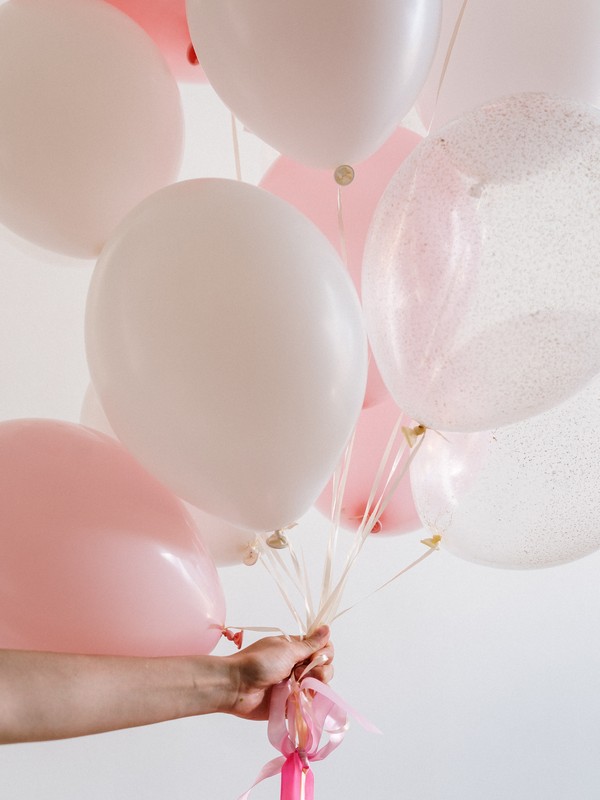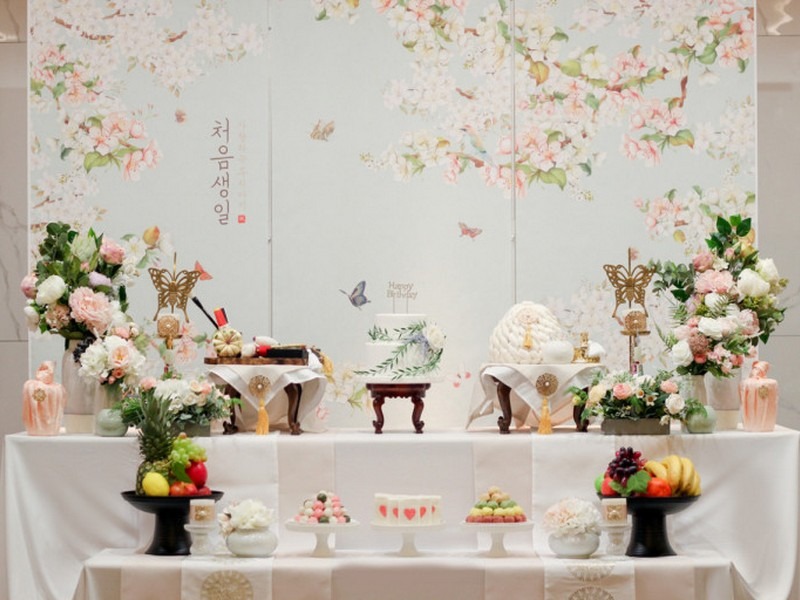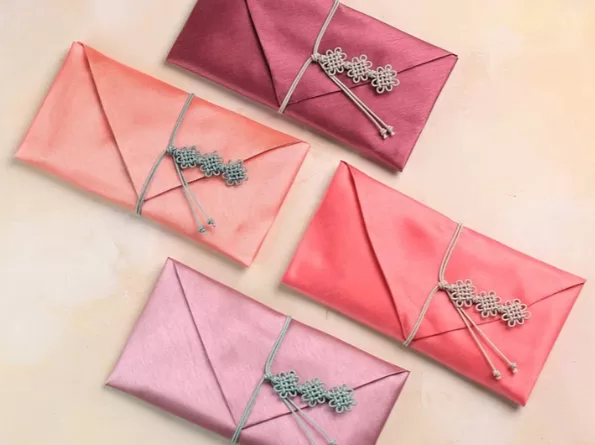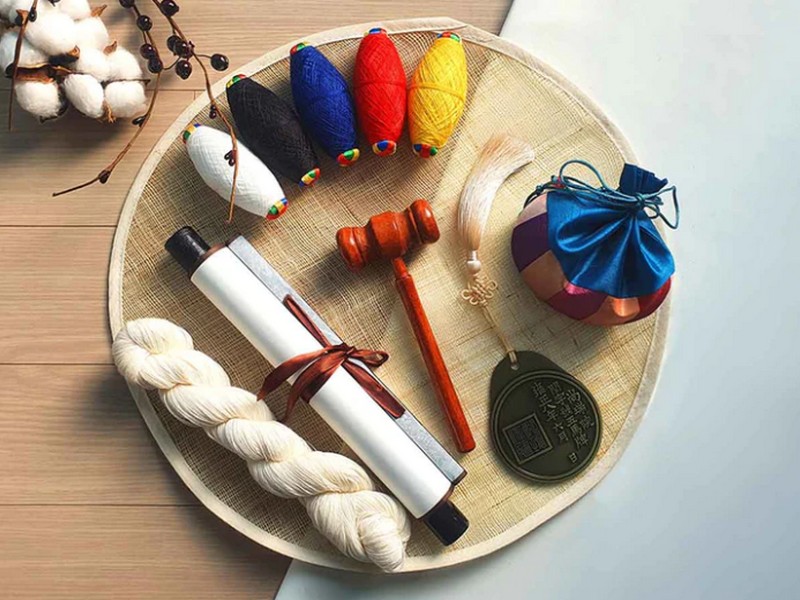A Baby’s First Birthday in Korea: How To Prepare a Doljanchi
Last Updated on December 20, 2024
Celebrating the first birthday of a child is a joyous occasion in any culture. The American and Korean cultures are quite different in how they celebrate birthdays, especially the first, so I jumped in head first with my Korean husband to learn more about the Korean dol and doljabi.
If you’re wondering what a Korean first birthday party is like, get ready to learn about a doljanchi, how you can find out what your child will be in the future, and more. From Hanboks to rice cakes and the other things you’ll need to prepare for your baby’s first birthday Korean style.

Feel free to skip around. Here’s what you can find in this post:
- My First Experience at a Doljanchi (돌잔치)
- Time For Our Own First Birthday Bash
- The Traditional Korean Birthday
- What To Prepare For A Baby’s Dol
- Where To Take Your Kids For Their Birthday In Seoul
- What Gifts To Take To A First Birthday
(This page contains affiliate links. That means if you click on them and purchase something, I will get a percentage of the transaction at no cost to you.)
My First Experience at a Doljanchi (돌잔치)
The first time I went to a Korean friend’s child’s first birthday bash, I expected to see balloons, lots of children playing and a cake, possibly mashed between tiny fingers, and other fun toys and things.



I was surprised to find that the event was much like Korean weddings. Set in a hall, adults sat around tables eating their buffet grub while a video of the baby from one month to twelve months played on a large screen at the front of the room where a decorated table for the child awaited. The child was carried from table to table to meet and greet the guests. Eventually he was taken to the front to choose an item from the main table to foretell his future and of course lots of photos were snapped.
At the end, I walked away with a gift for being the only foreigner in the room (because they did various raffles) and a party favor. Of course my expectations came from my western roots which led me to assume a baby’s first birthday would have more balloons and games and kids playing. Instead of focusing on the child though, it’s a bit more stoic and focused on the future and what that child will become and represent I found out.


Time For Our Own First Birthday Bash
When it came time for us, I was adamantly against the “lets invite everyone we know to a hall for our baby’s first birthday” idea just as I wasn’t interested in having a huge hall for our Korean wedding.
While some families in Korea opt for the larger halls for birthdays in which families and friends gather to watch as the child is paraded around a room, a video of the first year feats will likely play and a buffet meal is available to eat, many people these days are opting for small get-togethers which are much cheaper and provide a more intimate experience for the child and close family.
The Traditional Korean Birthday
The first birthday is called a “dol” (돌) or “doljanchi” (돌잔치) in Korean. This celebration was extremely important in the past as many newborns never made it to the first birthday due to lack of medicinal knowledge and childhood disease so when a child made it through the first year, a huge celebration would take place.
This isn’t just ancient history either, even in the 1950s the child mortality rate was 26% in Korea! This meant that reaching the first year was a major milestone. (Just so there’s no fear mongering if you’re pregnant in Korea, today, the infant mortality rate is much lower at .3%, but the traditions of celebrating are still major.)

The child would be dressed up in his/her first Hanbok. Parents would pray to two Korean gods: Sanshin (산신) (the mountain spirit) and Samshin (삼신) (the birth goddess) to start off the dol rite.
More About Sanshin: Mountains are a revered object and symbolize the center axis of the world, the place where heaven and earth are connected, throughout north Asia. Korea is covered with mountains, so it’s no wonder that this goddess is especially important in ceremonies and rites. Sanshin comes from shaman origin which was absorbed into Korean Buddhism when Buddhism was introduced to the peninsula.
More About Samshin: Samshin means “Three Goddesses” in Korean and are considered three grandmothers, who collectively are considered the goddess of childbirth in Korean shamanism. Samshin protects children from birth to age seven when the deity of the Seven Stars takes over.

The Ceremony: Bowls of rice, seaweed soup (miyeok-guk 미역국) and water along with rice cakes would be placed on a table. The rice cakes, in pretty rainbow layers, and fruit are stacked. Food is stacked high to symbolize a life of prosperity for the baby.
The mother or grandmother, only a familial woman in the family, would begin a prayer by bringing her hands together and rubbing her palms. The mountain goddess would be asked to give the child longevity while the birth goddess was thanked for the birth.
While this part of the ceremony is often foregone these days, I find it important to know in order to understand the event a bit better and its importance to the Korean culture. Interestingly, while Christian Koreans don’t partake in the traditional Jesa ceremonies because they were based on a pagan ancestral rite, they do partake in the dol ceremony.
Personally, we hold Jesa, dol, and every other Korean cultural tradition in our family because we believe they’re just that, cultural traditions. But, choose to pray to whomever you want or not at all. It’s just one part of the ceremony.
What To Prepare For A Baby’s Dol
There are a number of things you should prepare before the Korean dol ceremonies. If you’re outside of Korea, they’ll take a bit more time so plan ahead. At the simplest terms, you could just have a Hanbok and the items for them to take for their doljabi. You could go large though and create an entire dolsang, so let’s get into the set up.

Buy Your Baby’s First Hanbok
Usually birthday babies wear a Hanbok and a traditional hat called a jobawi or gulle for girls and a bokgeon or hogeon for boys. This is often the time that a baby’s first Hanbok is purchased. If you’ll want your child to wear a Hanbok for the event, make sure to put them in the outfit a few times BEFORE the actual event to get them used to it and comfortable… especially that hat! Or, just be like us, and forgo the head covering for something they won’t try to tear off.

Prepare a Dolsang (돌상)
Often when you walk into a birthday hall, the most photographic area is the dolsang. This is a beautiful table setting and there are a number of foods and dishes that are important to take note of because they represent hopes and wishes for the child’s future.
- A coil of white yarn symbolizes a long and healthy life for the baby.
- A variety of rice cakes (떡).
- The white rice cakes called baeksulgi (백설기) represents a pure start to life.
- The 5-colored rice cakes called osaek songpyeon (오색송편) represent harmony with one’s surroundings and are a wish that the child will grow and get along with different kinds of people and places. Some of these are empty which represents the hope that the child will embrace others with generosity and the ones that are full represent the hope that the child will be full of knowledge and wisdom.
- The red soosoo paht tteok (수수팥떡) wards off evil.
- 5 colorful silk pouches are a representation of a vibrant life.
- Dates are piled high to symbolize future children and a happy life for the entire family.
- Flowers are often used to decorate the table but it should be noted that they’re not usually real flowers because it would be negative to celebrate the start of a child’s life with the death of something else.
- You’ll also notice a table with the doljabi items prepared for the ceremony later.
Prepare The Items For the Doljabi Ceremony
The main event of the first birthday is the doljabi (돌자비) ceremony. A variety of objects are put on a table or tray in front of the child and whatever the child chooses foretells his or her future. The objects have evolved over time so below I’ve put two lists which includes the more traditional objects as well as the some of the updated additions.
While these are some of the common objects on the tables, don’t let this limit you. Often families will add something a bit more specialized to their own set and can be quite creative.
Items For A Traditional Doljabi Table
- pencil/book (smarts)
- food (won’t go hungry)
- money (wealth)
- thread (longevity)
- needle (talent in the hands)
- scissors (talent in the hands)
- ruler (talent in the hands)
- bow and arrow (military career)
Items For A Modern Doljabi Table
- microphone (entertainer)
- golf club/balls (athlete)
- computer mouse (tech. adept)
- gavel (judge)
- stethoscope (doctor)
- piggy bank/money (entrepreneur)
- graduation cap/books (scholar)
- science objects (scientist/inventor)
If you want a selection of objects that have a bit more sentimental value and will keep them, look into getting a set or a few things from Joteta which has a great line of Doljabi items or get a whole Doljabi set from them.



For our party, two of my husband’s friends also have babies and all three of them were born within two weeks of each other so we decided to have a get together with the three families to celebrate the babies and let them play.
Our daughter chose a computer mouse off the doljabi table and my husband seemed displeased though he laughed loudly. I think he pictured a gamer or someone obsessed with the computer while I had pictured Steve Jobs and other tech savvy people.


I was the only one to bring a gift for each babe, but again I’m the only foreigner in the bunch and I just couldn’t think of attending a birthday party without bringing a gift. Koreans often gift cash so it’s definitely not normal to bring a physical gift of some sort. The children all chose their items and played for hours while the parents ate and enjoyed some drinks.
Where To Take Your Kids For Their Birthday In Seoul
- Head to Lotte World one of the most popular amusement parks in the city and easy to get to conveniently located near a subway station.
- Take the kids to a show if yours are a bit older. The Painters Show is a fantastic non-verbal show. We had a great time seeing this twice!
- If you want a full day of family friendly adventure, check out this awesome tour by Klook to the Alpaca Pasture, Nami Island, and Garden of the Morning Calm. If you’ve got nature lovers in your family, this is seriously a great tour option.
- Another fun option if your kids like marine life, definitely check out the huge COEX Aquarium.
- A great option if your littles love strawberries like mine, check out the Strawberryy Dessert Buffet at the JW Dongdaemun Marriott Hotel.
What Gifts To Take To A First Birthday
Traditionally, pure gold jewelry in the form of rings was the most common gift given to babies to wish them health and prosperity. Upon receiving them, they would be placed on the babies fingers. While it’s not so common today, it is something our in-laws gifted and I’ve heard from friends is a gift Korean parents still commonly bestow.
Today, it’s common to give money for special events and celebrations. Don’t be surprised if guests bring envelopes with money and no toys or gifts for the child. Money are the standard gifting option for almost every holiday and event in Korea. The standard/average amount is W50,000 but if you’re close friends, you’d give a bit more.
Don’t let this stop you from giving a gift though. Giving something that means something to you or will to the family is fine.

The Sun & The Moon Story: The Sun & The Moon Story is a bilingual English and Korean children’s book. The story, written for young children, talks about how the sun greets us in the morning with bright rays of sunshine and helps us see the bugs, the flowers, and the world around us throughout the day. The colors in the book change from bright yellows and oranges in the beginning to blues and purples as the day progresses in the story.
It’s a calming bedtime story that takes children from morning to evening and comforts them as they drift off to sleep. The book is available on Amazon.com.

The Thunderous Hello: This is the second book in the series that I’ve written myself. The Thunderous Hello is another bilingual English and Korean children’s book. The story tells the tale of the very loud thunder cloud. He is just trying to say “hello” but of course it can sound very different to children.
The illustrations are once again done by the amazing Raquel Cruz who is able to bring together both western and Korean ideas into her drawings. It’s absolutely beautiful. The book is available for purchase on Amazon.com.
In the end, we celebrated in both American and Korean fashion and each party, though quite different, was fun for the birthday girl and brought together supportive and fun friends.
Did you like this post? Pin It!






4 Comments
Christa Springs
Hello! I am writing about dolchanji as well for a non-profit called A-KEEP. We have a cultural blog we use to share information about American and Korean culture. I was wondering if I could share the picture of the doljabi items at the table. As you probably know, I cannot find pictures of this practice in any creative commons. I will link back to your blog for further reading and make sure to give you credit and a link to the finish product should you agree. Please let me know and thanks for the read!
Hallie
Hi Christa, Yes you can use the photo with credit/link to the dolchanji post. Thank you for asking.
Andrea
Hi! Im attending a Dolijanchi for a close friend’s son who lives in the states – what are some good gift ideas?
Thank you!
Hallie
To be honest, if you were in Korea you’d probably just give cash which is the go-to gift. In the States, I’d say an appropriate aged toy gift would be just fine though. I’m sure the friends that live there understand American culture too.